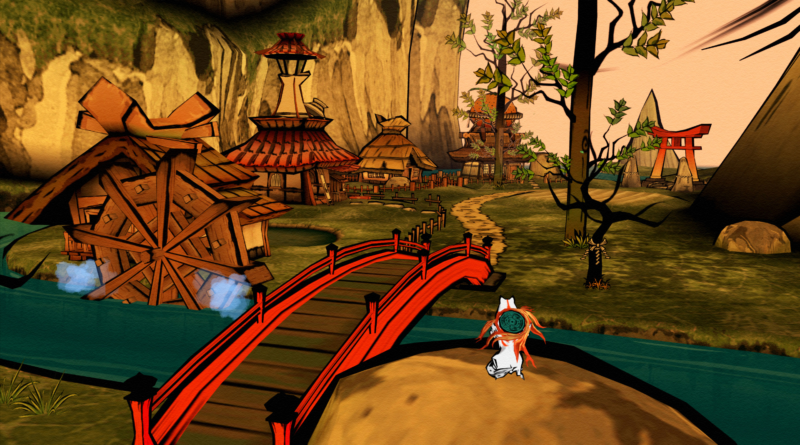Ōkami, Third Scroll – Playing God
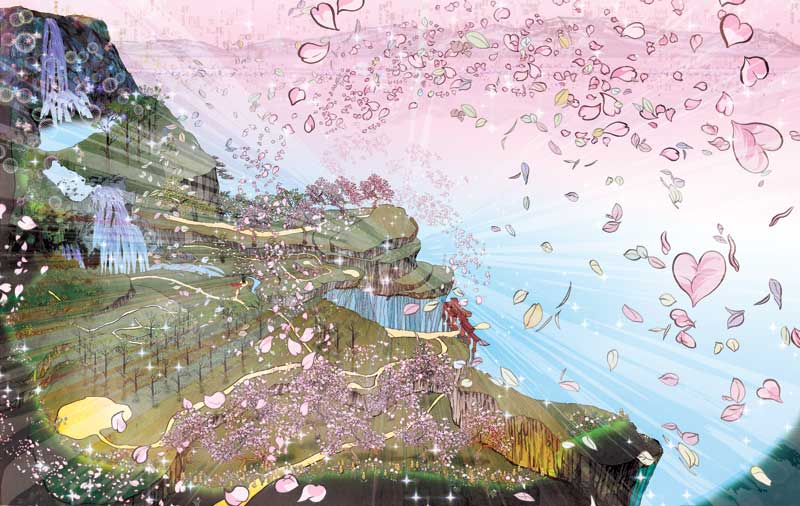
The land of Nippon, lovingly depicted in Ōkami’s sumi-e-inspired artstyle, is the backdrop for the events of the game. There are puzzles, collectibles, people and levitating Demon Scrolls for Amaterasu to interact with. Her main method of interaction, aside from headbutting people, is with the Celestial Brush.
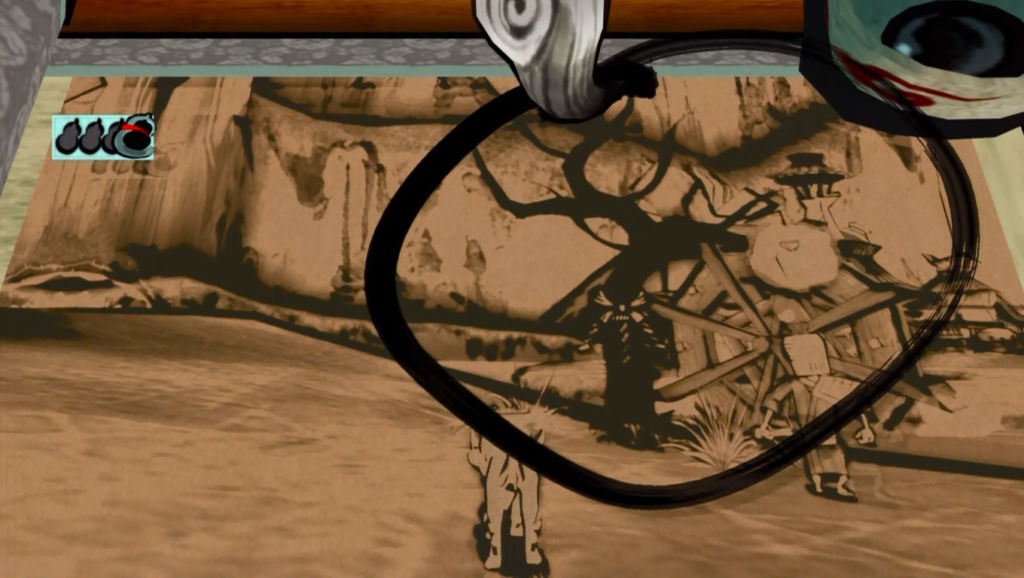
The Celestial Brush is a collection of skills that Amaterasu sought after throughout the story, fragments of her divine self that was splintered off from her presence when Shiranui died. The techniques, taking the form of divine gods, hid among the heavens as constellations waiting to be summoned and to aid Amaterasu.
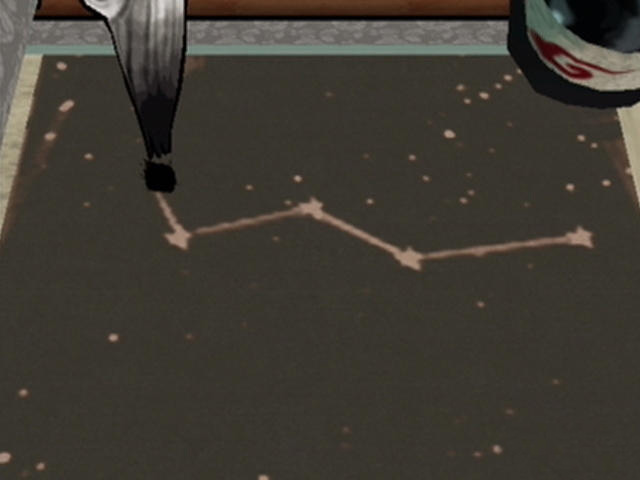
When you trigger the Celestial Brush technique screen, the world stops and is captured in a scroll, as seen above and below. A brush will appear on the screen, and different strokes will cause different effect to appear in the world, from summoning a gust of divine wind to a bomb. One fun little thing that isn’t part of the Celestial Brush techniques is drawing stars. Just pepper the night sky with ink dots and stars will appear in their place. And after a few moments, the stars turn into shooting stars streaking across the skies. It’s honestly pretty neat.
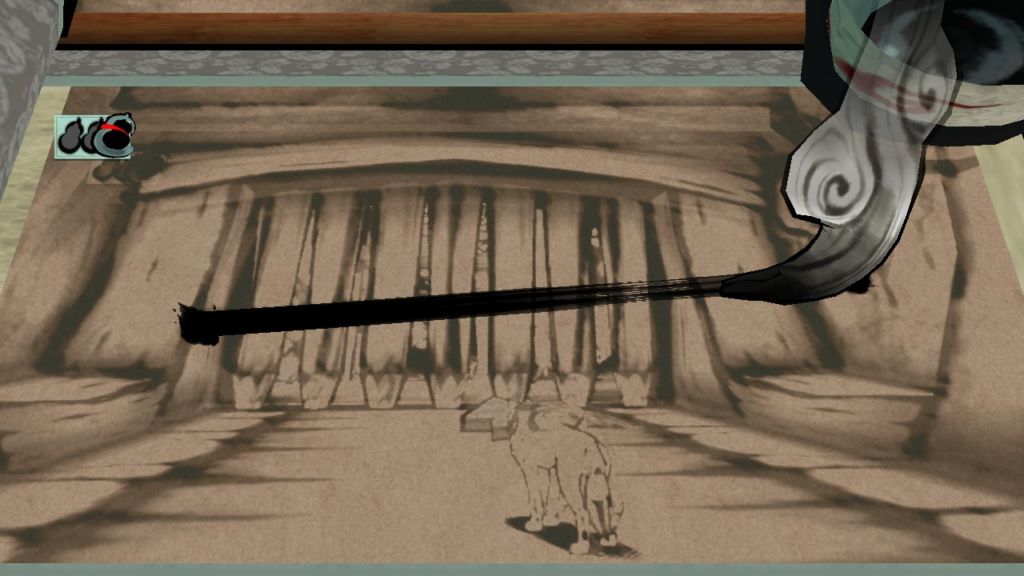
If we wear to be extremely technical about it, the Celestial Brush techniques are functionally the same as the inventory system in Legend of Zelda, the main inspiration for Ōkami. However, it is a lot more fitting considering the artstyle of the game, and the method which you gain the techniques reinforce a key gameplay element and theme of the tale: faith.
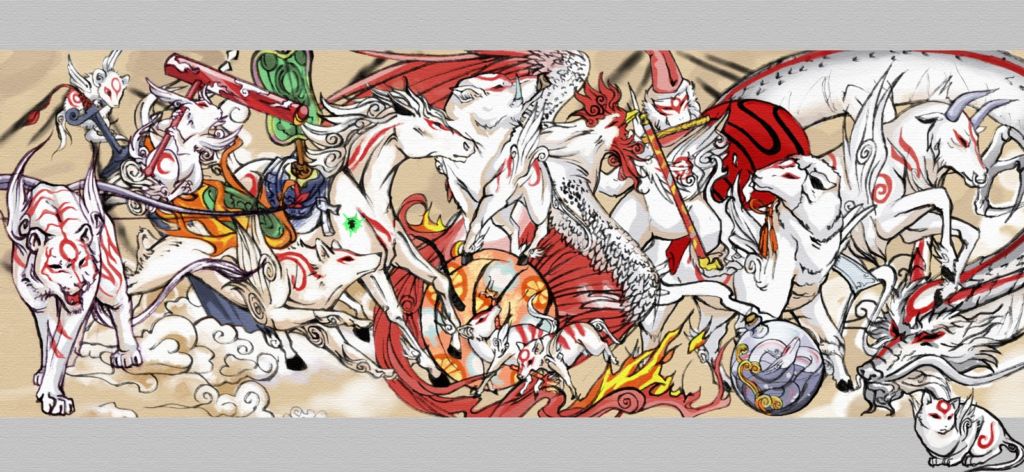
When you find a brush god, they greet you as “mother of all that is good”. They then pledge their power and faith to you, giving you the Celestial Brush technique. This echoes the theme where when Amaterasu manage to gain more faith and followers, her own strength grows.
Earning the faith of others is the main theme of Ōkami’s gameplay. But before that, you’ll need to first restore the land and the people to their original state before being able to interact with them. In the game’s beginning, Orochi has cursed the land and turned the people into statues, and you need to undo the curse before they regain life. But be warned, some areas are just pools of curses that have the power to sap you of your godly powers and reduce you into a plain white wolf.
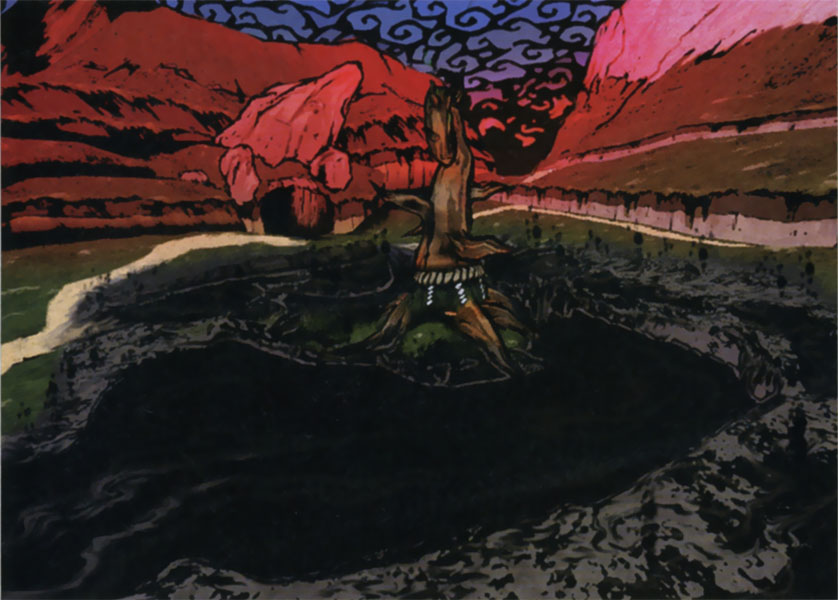
To undo the curse, Amaterasu must find a Guardian Sapling, and use the Bloom brush technique to bring it back to, well, bloom. The power of the tree spirit Sakuya resides in these saplings, and restoring them will allow it to burst forth and heal the land. Sometimes, the saplings have been reduced to seedling due to the curse, and Amaterasu needs to restore them to their full size before she is able to have them flourish again.
Once the land is restored, Amaterasu can get to work to help the beings living there. And that includes the trees and the birds. Some plants are still weak from the curse and needs a helping hand from Amaterasu to regain its full strength. Doing so will yield you fruits and Praise. Fruits and other food items fills up your Astral Pouch, which works like an instant revive. Praise is the manifestation of the faith of the living things in your, and serves as upgrade points for your health, Ink Pots (you do need ink for your brush techniques, no?), purse size (even wolf gods need money) and purchasing more Astral Pouches.
Amaterasu can purchase Feedbags, which can either contain seeds, herbs, meat or fish. Feeding the animals with them will also grant you Praise. And of course, you’ll have no luck trying to feed deer with fish, so you must have the correct type of Feedbag on you to feed the animals you encounter. There was one rather annoying occasion, where after traveling onto a remote Island and climbing upwards for at least three full minutes, you encountered a really hungry cat. You need to feed it to summon Kabegami the cat god and progress with the story, and you’ll be out of luck if you went through the whole hassle without the fish Feedbag. Sure, you went up because you heard a cat meowing, so it is signposted adequately, but the nearest shop is on the mainland at least two minutes away from the island.
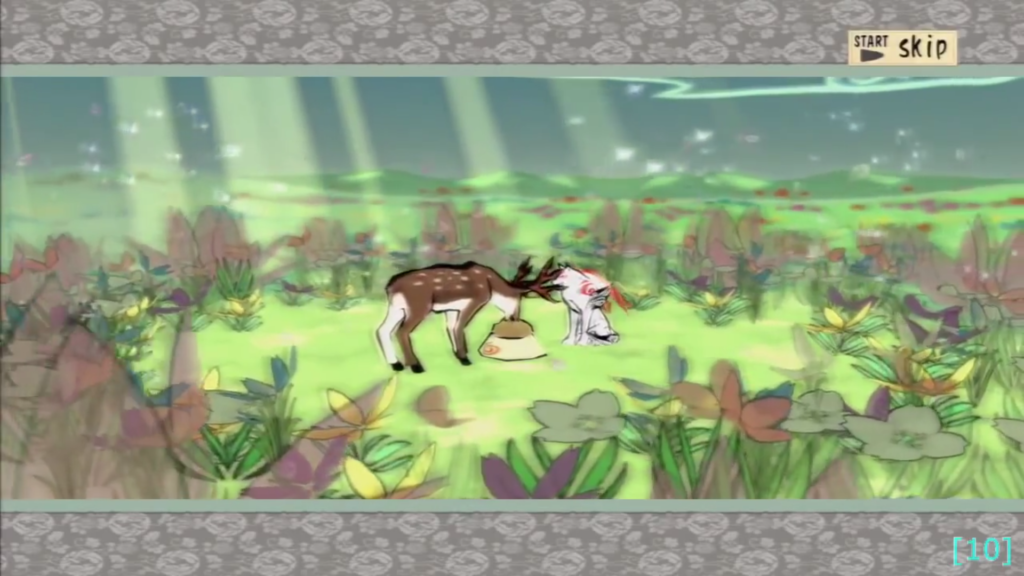
As for gaining Praise from people, it could be as simple as helping them fix something broken, to becoming a heavenly hitman ending the lives of a few specific demonic targets at the request of someone, to fishing. There are quite a few different sidequests, and they are generally not necessary for progression. Fulfilling the main quests will also give you Praise as well.
There are also collectible hunts which grants you valuables to sell, or upgrades like Sun Fragments which increases your maximum health, to useful items that can aid you in battle. There are also some specific sidequests, which upon completion grants you upgrades to your Celestial Brush techniques, which are necessary for getting some of the collectibles. Not to mention, they are really, really handy in combat.
Combat is generally divided into scripted encounters, random encounters, and boss fights. Scripted encounters generally happen to introduce you to new mechanics or new monsters, or as part of a quest. They are generally unskippable and you can’t escape from them. Nothing much to say about this, just beat them up and that’s it.
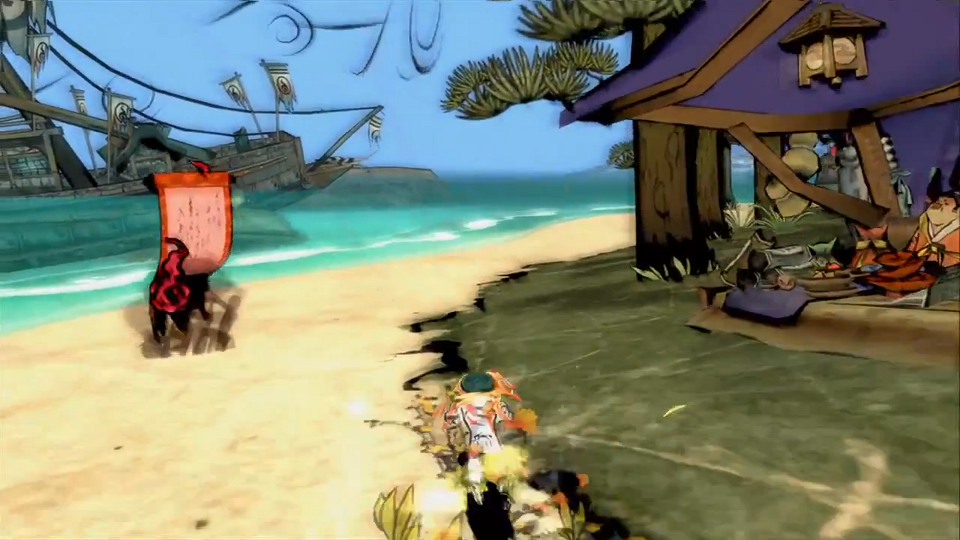
Random encounters are a bit special. In parts of Nippon, demonic presence manifest themselves as floating scrolls. Coming in contact with one will trap you in an arena with the monsters. You can find a weak spot in the walls and strike that spot to break out, or just show the demons what for as you rain divine justice upon them. Random encounters can actually be avoided using the Celestial Brush techniques on the scrolls. You can cut them down, summon wind to knock them flat on the ground, or just set them ablaze. Seriously, manifest your presence as something more rugged next time.
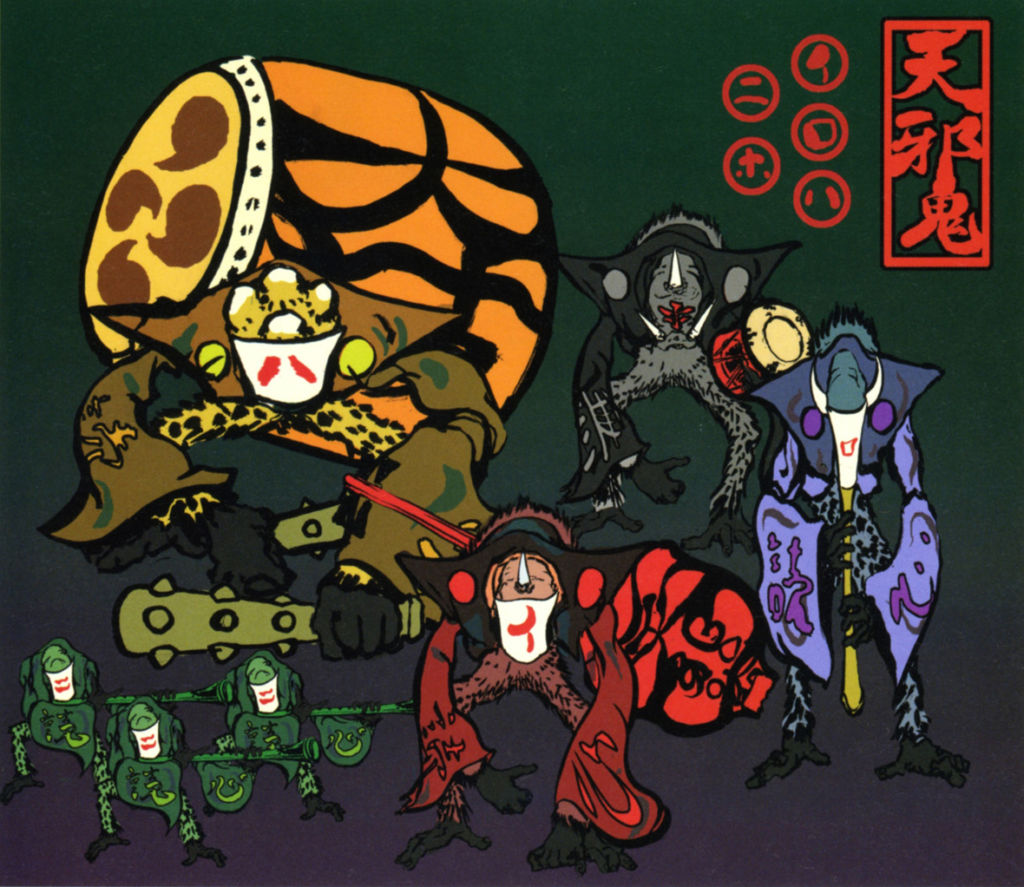
The mobs themselves are quite well designed , drawing heavy inspiration from Japanese mythology. Some of them have invulnerability states which you need to use Celestial Brush techniques to overcome, others have weaknesses which you can exploit with the brush techniques. One fun thing to do is to just squiggle over them with the Celestial Brush, which will cover them with ink and blind them as you get ready to lay the smackdown on them.
Combat is mainly done using the Divine Instruments which Amaterasu bears on her back, or around her neck if it’s a Rosary. Each of them differ in range, power, attack speed, and secondary effects, which will appear if said weapon is equipped as a secondary.
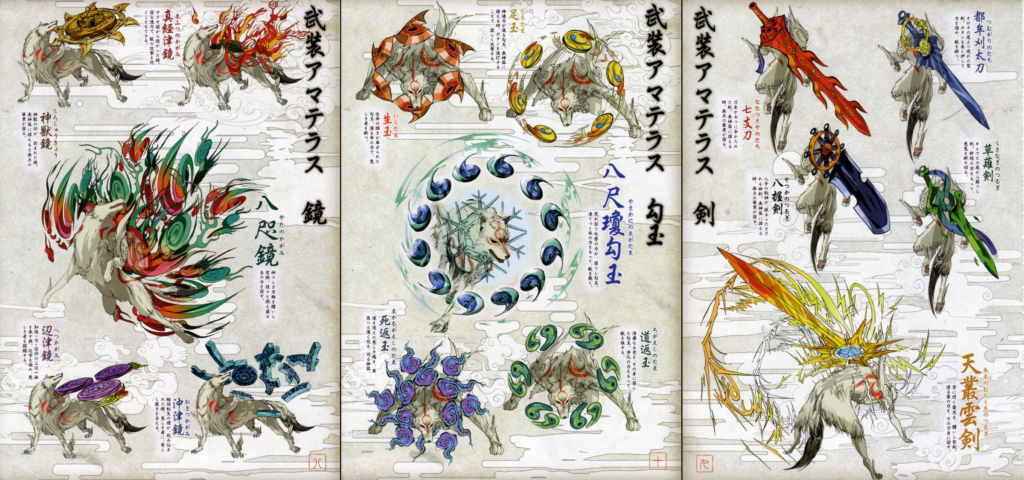
The Reflector has a small range, but decent attack speed and strength, and is the weapon type of the first weapon you have. When equipped as a secondary, it forms a shield which Amaterasu can use to deflect a hit. The Glaive has decent range and slow but very powerful attacks. To draw out the blade’s full power, you’ll need to charge the blade before unleashing a strike. Its secondary effect is to unleash a slash, turning into a dash strike when charged.
My favourite weapon type of all is the Rosary, which is essentially a whip. The individual attacks may be weak, but it has a really long range and the Rosary generally hits more than once. Its secondary effect is to shoot out the bead like bullets, machine-gun style for the first (yellow), third (green) and final (snowflake) Rosary, shotgun-style for the second (red) and fourth (purple smoke). My in-game final loadout was the final Rosary as my main weapon and my third Rosary being the sub.
Also a side note, the final weapon of each type has an element attributed to it, which can serve as a source for some of the brush techniques. The final Reflector, Rosary and Glaive embodies fire, ice and electricity respectively. Also, you can use Celestial Brush techniques to sign off the deaths of demons, but using it too often will drain all your Ink Pots dry, which will cause you to lose access to your Divine Instruments as well until they regenerate.
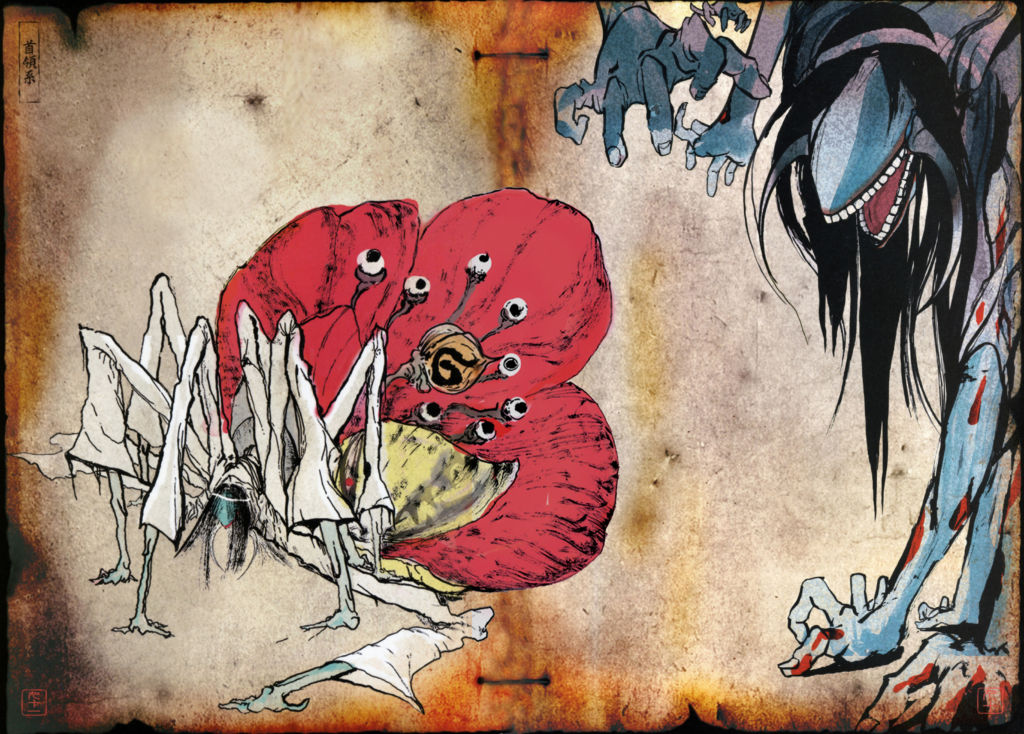
The boss fights are where the Legend of Zelda influence shines the most. Each boss has a specific brush technique that is needed for you to use before you can take them down, and it is generally easy enough for you to tell which technique is necessary. For example, hooks will suggest that Vine will be helpful in tying a demon up, and a sword held high is just begging for a lightning strike.
And that about covers the major gameplay mechanics of Ōkami. There are many little details that I haven’t covered, but I think that’ll just drag this article on for way too long. Which sucks, because these little details are fun. For example, do you know you can summon a tree to sprout up from the ground and knock people over?
